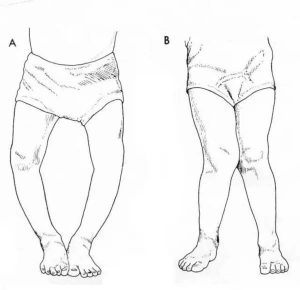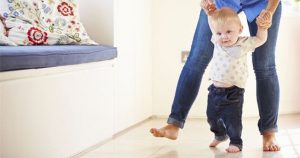The feet of the human body support body weight and serve as shock absorbers, pushers, and balancers on uneven ground.
The human foot consists of three arches: the medial arch, the lateral arch, and the transverse arch.
Children must learn to crawl, walk, jump, and maintain their balance from birth to growth. In the process of this growth, parents will find that children will appear inside or outside when they walk or stand. In fact, when babies under three years of age are learning to walk, they may have symptoms of toe-in or toe-out. If such a situation is discovered after the age of three, further testing and correction are required. Mom and dad can ask children to stand naturally. If the space between the inner sides of the knees is more than 5cm or the angle of the thigh or calf is more than 25 degrees on X-ray, it is an O-leg; if the baby stands naturally, the inner sides of the knees should be close and the inner ankles should be close together. If the distance exceeds 10cm, it is an X-shaped leg.

Some parents also asked: Why does my child have toe-in and toe-out phenomena? And other children will not have it?
1. Nervous system diseases: Babies with cerebral palsy or cranial nerve damage may cause flat feet, deformed hips, toe-in, toe-out, or deformities because of low muscle tension;
2. Trauma: thigh fractures and growth plate fractures can cause X-shaped legs or O-shaped legs;
3. Plantar Adduction: When the child is lying flat, the rear end of the foot is normal, but the front end is retracted. It is common in babies before one year of age. The reason is mostly due to intra-fetal compression. Most of the feet are still very soft, and the front of the feet can be straightened out with a little effort.
4. Internal rotation of the tibia: more common in children between one and three years old. The appearance of the foot is normal, but when walking, the foot rolls inward. In more serious cases, parents may notice the internal rotation of the calf, sagging arches, and frequent tripping.
5. Excessive forward-leaning of the upper end of the femur: Children over three years old tend to fall into this category when they walk. These children like to sit on their knees in the Japanese style with their feet in a W shape.

6. Flat feet/heel valgus: Many children with flat feet due to changes in the biomechanics of the feet, sinking, and decreased muscle strength of the feet, causing the phenomenon of walking inside.
7. Improper wearing of shoes: shoes that are too large or too small cannot give the foot the correct support, causing uneven force on the soles of the feet, affecting the development of the bones of the feet, and causing imbalances in the body. If a child is found to have a long-term sprained ankle or unbalanced walking, the arch of the foot may have been gradually turned and deformed, causing the phenomenon of walking inside or outside.
8. Correct sleeping posture: For children who like to sleep on their stomachs, if the feet are tilted inward, it will also cause the inner part; if the feet turn outward, it will cause the outer part.
9. Wearing diapers: For the convenience of going out, some parents usually like to pad their babies with diapers, especially when the weather is cold, it will cause O-legs or diapers for a long time.
10. Use walkers: Too early and frequent use of walkers can easily cause toe-in or toe-out gaits.
Some parents bring a months-old baby to the doctor: “What should I do if my baby has a toe-in or toe-out phenomenon?”
Doctor Yuan advises parents: “Children’s feet are definitely not the embryonic form of adult feet. Their plasticity is quite large, and as a result, the shape can be easily changed.”

Children grow up only once. Correct foot care can promote the normal development of children’s feet and prevent the appearance of deviations and deformities in the growth of foot bones. If there are children with mild toe-in or toe-out, choose a pair of shoes of the right size, soft and hard. When parents observe whether the shoes are suitable for small feet, they may walk for two or three hours with new shoes, take off the shoes, and check whether the child’s feet are red or swollen, or whether there are signs of friction on the skin. If the above symptoms are present, it means shoes. Inappropriate.
Growing children should develop good shoe habits, correct sleeping, and sitting posture. Fathers and mothers find that the children’s arches are collapsed or there are toe-in or toe-out phenomena when walking, they attract attention and let the specialists customize a pair of personally exclusive orthopedic shoes for the baby, orthopedic insoles combined with posture correction belt Biomechanical force can improve the symptoms of the toe-in or toe-out, and prevent the deviation of spine growth. If there is severe toe-in or toe-out, surgery is needed to correct them.

